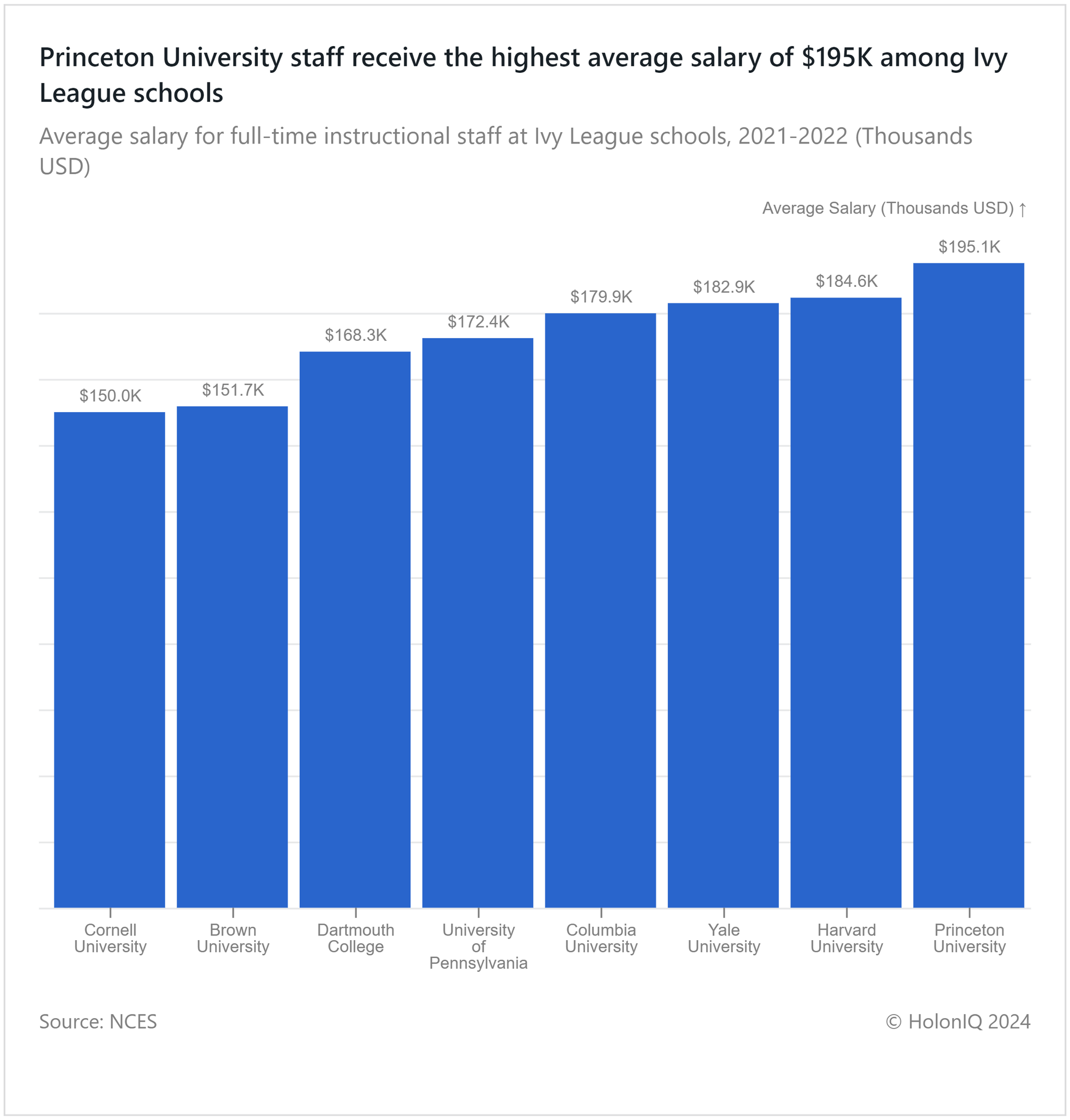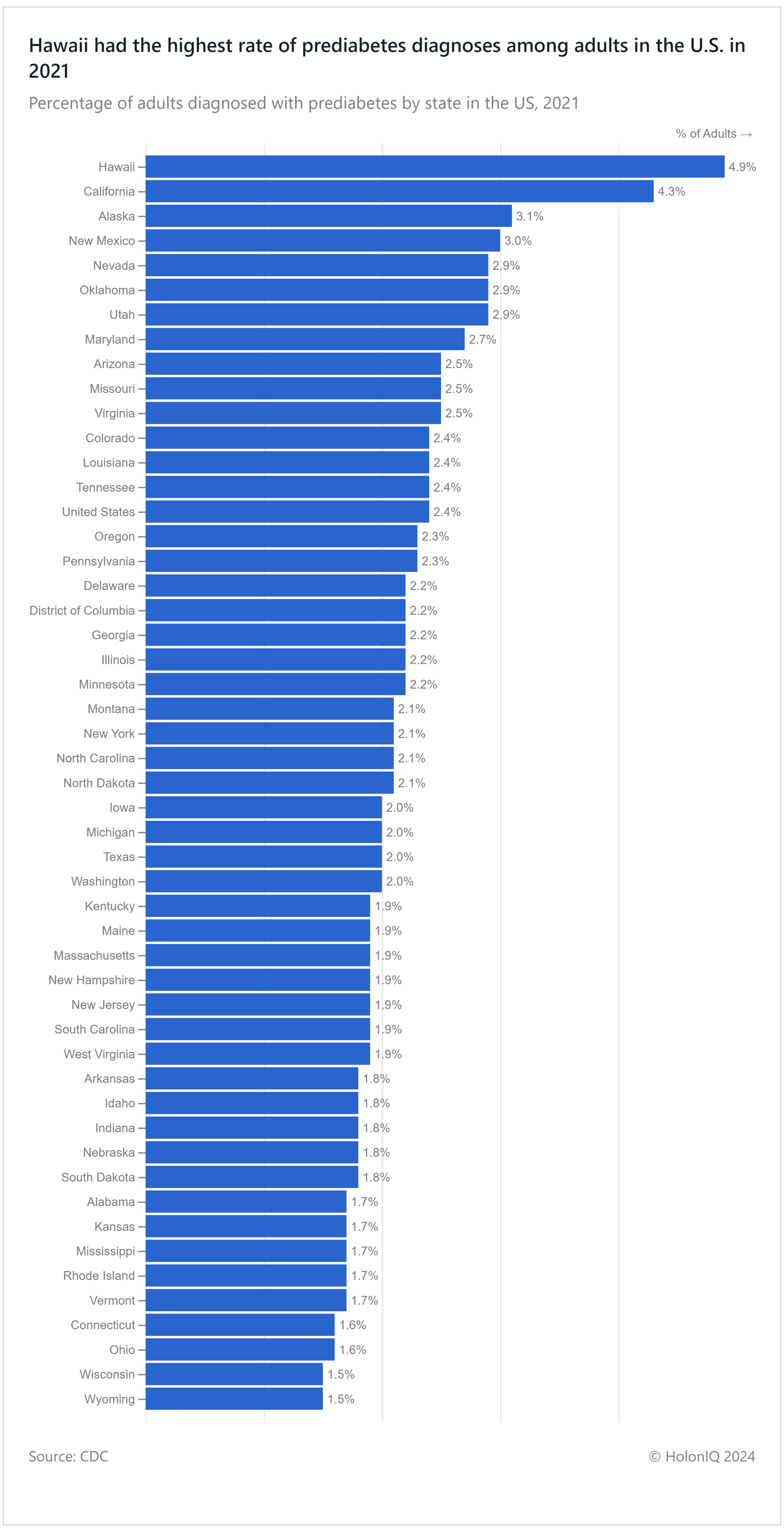🎓 Princeton Tops Ivy League in Staff Salaries. 63% Power Plants Solar. US Pre-diabetic Diagnosis Rates.
Chart of the Day #175 looks at University Staff Earnings, Renewable Capacity and Diabetes
Privet 👋
Eurus Energy has begun expanding the Odanosawa I & II wind farms in Aomori, Japan, replacing old turbines with seven new 4.3 MW turbines. The upgrade will increase capacity from 13 MW to 43 MW by March 2027. Over half of patients assessed by GPs in a recent study were found at high risk of cardiovascular disease or diabetes.
Today's Topics
🎓 University Staff Earnings. Princeton staff receive highest Ivy League salary of $195K
⚡ Renewable Capacity. 63% of renewable energy power plants in Japan were Solar in 2023
💉 Diabetes. Hawaii has the highest US pre-diabetic diagnosis rates
For unlimited access to over one million charts, request a demo.
🎓 Princeton Staff Receive Highest Ivy League Salary of $195K

In 2021-2022, Princeton University led Ivy League schools with an average salary of $195,056 for full-time instructional staff, followed by Harvard at $184,588 and Yale at $182,947. Cornell University had the lowest average at $149,964. These figures highlight salary disparities within the Ivy League, reflecting differences in institutional budgets and faculty compensation strategies.
⚡ 63% of Renewable Energy Power Plants in Japan Were Solar in 2023
In 2023, Japan had 3,874 solar power plants, leading its renewable energy efforts. Hydropower followed with 1,759 plants, while wind, biomass, and geothermal trailed significantly. This distribution reflects Japan's commitment to solar energy in its pursuit of climate goals under the Paris Agreement, aiming to achieve carbon neutrality by 2050. Japan's efforts align with regional alliances like the Asia-Pacific Partnership, promoting renewable energy to combat climate change.
💉Hawaii Has the Highest US Pre-Diabetic Diagnosis Rates

In 2021, Hawaii (4.9%) and California (4.3%) had the highest rates of adults diagnosed with prediabetes in the U.S., while Wyoming (1.5%) and Wisconsin (1.5%) were among the lowest. This data highlights regional disparities in prediabetes prevalence, underscoring the need for targeted prevention strategies, especially in states with higher rates. Nationally, the average was 2.4%.
Like getting this newsletter? For unlimited access to over one million charts, request a demo.
Thank you for reading. Have a great week ahead!
Have some feedback or want to sponsor this newsletter? Let us know at hello@holoniq.com
